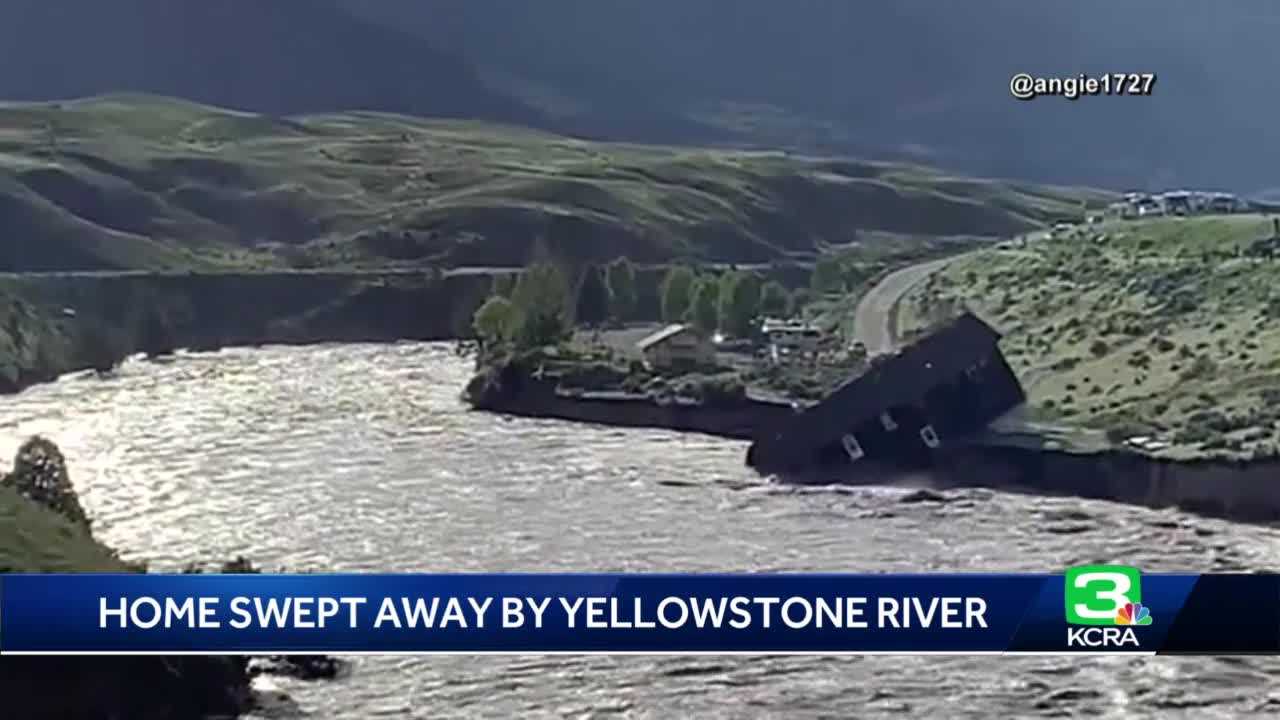Here’s what led to historic flooding in Yellowstone National Park

Yellowstone National Park remains closed to visitors as of Wednesday morning after destructive flooding earlier in the week. Mud and landslides, along with very high and fast water flows on the Yellowstone River, damaged major roads and other structures in the far northern section of the 2.2 million acre park.While this past week has been wetter than average in northwest Wyoming, there are several other factors that led up to the historic flooding. First, was this past snow season. Though storms were slow to come at first in the Rocky Mountains, powder piled up quickly starting in late December. The region wound up with an above-average snowpack. Fast-forward to spring, the runoff season. All of that snowpack has been melting and ending up in creeks and rivers. This is a time of year when many waterways are swollen with snowmelt, and a few locations were already near flood stage before this week.Add to that unusual warmth over the past week or so. Temperatures in Yellowstone National Park topped out in the 70s, 10 degrees higher than average. According to a hydrology expert at the National Weather Service office in Riverton, Wyoming, that warmth accelerated the melting process and led to even more runoff. Finally, when it rained earlier this week, it poured. Radar estimated rainfall totals range from 2 to 4 inches over the past several days. That is at least an entire month’s worth in a much shorter time frame. That wet weather, on top of all of the other factors, led to the damaging flooding in the park. Mark Koshmrl has been reporting on natural resources in Wyoming, including Yellowstone National Park, for the past 10 years. He anticipates damage to impact northern sections of the park for months, possibly years. Video: Thousands evacuate Yellowstone National Park after floodingHe emphasized that a majority of the massive park was unharmed. But many gateway towns on the northern end could feel some negative effects from closures.“Those are tourism-dependent communities. I imagine that they are in for some hurt. That being said, we’ve seen record visitation and if they take a step or two back in terms of numbers, they might just be going back to 2015 visitation levels.” Scattered showers are back in the forecast for the Yellowstone region later this week, but rainfall is not expected to exacerbate flooding issues.Video: House falls into river near Yellowstone National Park
Yellowstone National Park remains closed to visitors as of Wednesday morning after destructive flooding earlier in the week.
Mud and landslides, along with very high and fast water flows on the Yellowstone River, damaged major roads and other structures in the far northern section of the 2.2 million acre park.
While this past week has been wetter than average in northwest Wyoming, there are several other factors that led up to the historic flooding.
First, was this past snow season. Though storms were slow to come at first in the Rocky Mountains, powder piled up quickly starting in late December. The region wound up with an above-average snowpack.
Fast-forward to spring, the runoff season. All of that snowpack has been melting and ending up in creeks and rivers. This is a time of year when many waterways are swollen with snowmelt, and a few locations were already near flood stage before this week.
Add to that unusual warmth over the past week or so. Temperatures in Yellowstone National Park topped out in the 70s, 10 degrees higher than average. According to a hydrology expert at the National Weather Service office in Riverton, Wyoming, that warmth accelerated the melting process and led to even more runoff.
Finally, when it rained earlier this week, it poured. Radar estimated rainfall totals range from 2 to 4 inches over the past several days. That is at least an entire month’s worth in a much shorter time frame.
That wet weather, on top of all of the other factors, led to the damaging flooding in the park.
Mark Koshmrl has been reporting on natural resources in Wyoming, including Yellowstone National Park, for the past 10 years. He anticipates damage to impact northern sections of the park for months, possibly years.
Video: Thousands evacuate Yellowstone National Park after flooding
He emphasized that a majority of the massive park was unharmed. But many gateway towns on the northern end could feel some negative effects from closures.
“Those are tourism-dependent communities. I imagine that they are in for some hurt. That being said, we’ve seen record visitation and if they take a step or two back in terms of numbers, they might just be going back to 2015 visitation levels.”
Scattered showers are back in the forecast for the Yellowstone region later this week, but rainfall is not expected to exacerbate flooding issues.
Video: House falls into river near Yellowstone National Park




